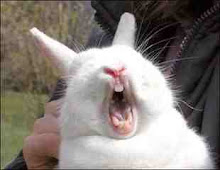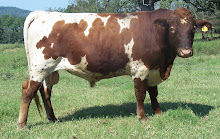SPECIES VERSUS BREED
“Are American Chinchilla rabbits really on the endangered species list?”
Short Answer: No.
Long Answer: Sort of.
We are used to the concept of endangered species. We’ve all heard stories of the decline of the Bald Eagle, the Siberian Tiger, Black Rhino, Grey Wolf, Spotted Owl, etc. The list is unfortunately far too long, and not getting any shorter. These animals are classified as endangered by their species.
A species is defined as a group of animals, a subdivision of the taxonomic classification of genus that are closely related, physically similar, and can interbreed with one another but not with members of another species.
A breed, on the other hand, is a further subdivision of the species classification. All domestic rabbits in the United States are members of the same genus and species, Oryctolagus cuniculus. (Don’t ask me how to pronounce it.)
So, while all domestic rabbits are the same species, no one would ever confuse a Netherland Dwarf with a Flemish Giant. The differences between the Netherland Dwarf and the Flemish Giant are obvious, and evidence of the further subdivision contained within breeds.
New breeds can be created. New species are discovered.
Breeds are unique to domestic animals, a legacy of the 10,000 year old relationship between man and domestic animals. (The closest thing that compares in wild animals is the subspecies classification, but let’s not muddy the water with that right now.)
There are no endangered species of domestic animal. Cattle, horses, sheep, pigs and rabbits, as classified by species, number in the tens of millions of individuals.
What is endangered are certain breeds of domestic animal.
It’s easy, especially in a relatively rural environment; to be so used to the presence of domestic species they seem to escape our notice and concern. But each breed contains a treasure chest of genetic diversity. Diversity honed by the environment, geography, by man’s selection and countless other factors, making each breed unique and valuable.
Unfortunately, recent trends in agriculture have placed many breeds of livestock, rabbits included, in the same waters as endangered species. Numbers so reduced, that only careful management can prevent their loss.
That’s where conservation breeders and organizations such as the American Livestock Breeds Conservancy come in. The ALBC annually publishes a Conservation Priority List, grouping the animals by species, and then further breaking the species down by breed, and then ranking them according to priority. You can see more information here.
The list is a working document, and is reviewed annually. If necessary changes can be made in categories, moving breeds from Rare to Threatened, or worse, from Threatened to Critical as data comes in on registrations, births, deaths, etc. A breed in the Critical category can be thought of as being in similar jeopardy as a endangered species, numbers so few that serious action needs to be taken to prevent their loss.
It isn’t a perfect document, or an exact science. It isn’t supposed to be. It’s simply a tool to be used in making decisions where to expend resources, and give breeders and idea where to focus their energy. And while no species of domestic animal is likely to wind up on the endangered species list, hopefully we can help to keep certain unique and valuable breeds from sliding further into the category of critically rare breeds.
Awareness is the first step.
Thursday, March 4, 2010
Subscribe to:
Post Comments (Atom)
.jpg)



No comments:
Post a Comment